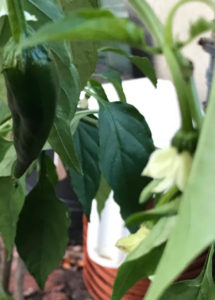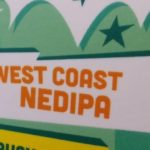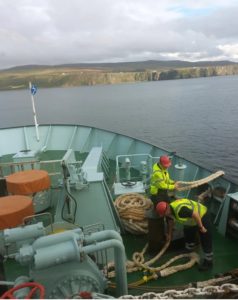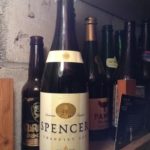 Here we are. Christmas Eve… Eve… Eve… because the 25th is Sunday and that screws everything up. The kid still goes to school tomorrow, which is insane. I am sorta off but not off as there isn’t much happening now a week after even the staff Christmas parties are over. And… there’s a HAMMER OF THOR snowstorm coming tomorrow. All good. I’m Christmassy and that is all that counts. Fam’s all here, pressies bought and the tree is lit! I thought I would pull back the curtain and give you a sense of the life at my house at the holidays. KIDDING!!! That’s not my house, that’s “The Chess Players” by Gustav Wintzel of Norway from 1886. Look at that beer! Gotta be a litre glass right there plus the colour is key to the entire painting, establishing the triangle with the contents of that shelf… probably a mantelpiece with the firebox hidden by those rugs. Lovely.
Here we are. Christmas Eve… Eve… Eve… because the 25th is Sunday and that screws everything up. The kid still goes to school tomorrow, which is insane. I am sorta off but not off as there isn’t much happening now a week after even the staff Christmas parties are over. And… there’s a HAMMER OF THOR snowstorm coming tomorrow. All good. I’m Christmassy and that is all that counts. Fam’s all here, pressies bought and the tree is lit! I thought I would pull back the curtain and give you a sense of the life at my house at the holidays. KIDDING!!! That’s not my house, that’s “The Chess Players” by Gustav Wintzel of Norway from 1886. Look at that beer! Gotta be a litre glass right there plus the colour is key to the entire painting, establishing the triangle with the contents of that shelf… probably a mantelpiece with the firebox hidden by those rugs. Lovely.
 Right off the top, how is this for a graph from the Victim of Math? Click on it for more detail. It’s the Health Survey for England’s data showing how young people there are abandoning drinking – and have been on a steady trend of going clean at an amazing rate of change. It looks like in 2017 less than 25% of women 16 to 24 well over 40%. The lads are less less inclined but seem to have gone from about 17% dry to 34% so over the last ten years. Don’t know what that bodes other than it bodes something.
Right off the top, how is this for a graph from the Victim of Math? Click on it for more detail. It’s the Health Survey for England’s data showing how young people there are abandoning drinking – and have been on a steady trend of going clean at an amazing rate of change. It looks like in 2017 less than 25% of women 16 to 24 well over 40%. The lads are less less inclined but seem to have gone from about 17% dry to 34% so over the last ten years. Don’t know what that bodes other than it bodes something.
Speaking of boding, Jordan wrote the third in his St. Johnian* Effort in the “boding not too welling in Ontario” series this week, the conclusion of which I will ruin knowing it is not the end… not even the beginning of the end… but more like the end of the beginning:
Let’s see if we can recap: Beer is a luxury good by default, and its cost has outpaced wage growth. As established earlier, we’re dealing with the smallest cohort of people turning 19 in living memory, a cohort smaller than any other group younger than 65. Per capita consumption is going down year over year, presumably due to multiple issues including health and lifestyle choices, but also because of decreased relevance due to affordability. Additionally, this is in the face of greater availability in terms of retail purchase locations in the province’s post-prohibition history.
Add callow youth ditching drinking to that list… Perhaps related, an interesting article in The Times on James May and his pub and the lessons he has learned about the marketplace:
Pubs, for obvious reasons, proliferated in the Victorian era, especially in towns and cities, where they were effectively the communal part of working people’s homes. We know that Ebenezer Scrooge, in A Christmas Carol, “took his melancholy dinner in his usual melancholy tavern”. But pubs don’t need to fulfil this role any more. They are entirely places where we go of our own volition, rather than out of necessity, and they need to acknowledge this. Note how it’s dreary pubs that subscribe to the old thinking, with their mediocre food, crappy karzis and limited drinks lists, that close down. Good pubs, the ones that have readjusted, are doing fine, and we don’t need as many of them as we once did.
What’s that? “Cheer! Give us cheer!!!” you say, gentle readers. Quite so. the ever excellent Evan Rail shared some wonderful Yuletide info about mulled things and spiced things as well as the celebration of wassail:
While the orchard wassail is closely tied to Twelfth Night on Jan. 5 or 6, hardcore traditionalists will celebrate wassail according to Twelfth Night on the Julian calendar, which was used in England until 1752. By that measure, the proper date for an orchard wassail would be Jan. 16 or 17 on today’s calendar. For the sake of convenience, many wassail events are simply scheduled on January weekends. In the village of Hartley Wintney in Hampshire, England, the annual wassail is set to take place on Friday, Jan. 13, with a torchlight procession that starts at the village pub, the Waggon and Horses, where publican Kaesy Steele will be serving a traditional mulled cider.
Do we still care who owns the brewery? I mean, I was sorta making fun of this idea back in 2015… seven years ago tomorrow. Pete Brown updated the dance card and quite rightly treated craft and not craft as all the same thing:
Many leading craft brands have now been acquired by the giants. That’s just how it is. Now – the ownership structure of the beer industry may be of no interest to you. If you’re already drinking mainstream lagers from global giants and you just occasionally fancy something hoppier, that’s up to you. I won’t judge. However, if one of your motivations for drinking craft beer – or just as importantly, cask/real ale – is that you want to support small, independent businesses, it’s not always obvious whether or not the brand in front of you is the real deal.
Nice. Just remember that ownership is only half the story. Obligations in law like debt and shareholder agreements have as much or more influence over a business’s independence. Folk that promote their independence suddenly find, upon a downturn, that they are quite dependent. Consider the Case of Mr. Musk.
Now… in history making history, Ron pushed the early edge of brewing records and published in 1805 pale stout recipe.
Here’s proof that Stout didn’t always imply a dark beer. An example of the pale malt analogue of Brown Stout. It’s a type of beer which must have died out early in the 19th century as this is the only example I have. I’ve no idea why it disappeared but it may be connected with Porter brewers moving to brewing only dark beers. The grist couldn’t be simpler: 100% Hertfordshire pale malt. There’s really nothing more to say.
And Liam found a reference to India Pale Ale dated 1824 (proceeded by “West”) and set off a bit of speculation as to its meaning and implications. I  would only add that Vassar in the 1830s referred to one of his ales as “South” as illustrated to the left – but I am quite sure he did not create something called Southern Ale. Just as “style” is useless before it is defined and defined again by Jackson in the 1980s, the further you go back from that, the less meaning categories have. Ideas can’t flow backwards. I suspect that the predecessors to IPA, both eastern and western classes, were the English strong ales named after cities like Taunton and Dorchester and Derby, both evolving and branded according to given marketplace expectations.
would only add that Vassar in the 1830s referred to one of his ales as “South” as illustrated to the left – but I am quite sure he did not create something called Southern Ale. Just as “style” is useless before it is defined and defined again by Jackson in the 1980s, the further you go back from that, the less meaning categories have. Ideas can’t flow backwards. I suspect that the predecessors to IPA, both eastern and western classes, were the English strong ales named after cities like Taunton and Dorchester and Derby, both evolving and branded according to given marketplace expectations.
It’s that time of the year. No, not just for Ron’s DrinkAlongAThon. The time for lists!! Best wines and Golden Pints. Here are the ten most read stories on Pellicle. Here’s Lisa’s. Alistair of Fuggles has been putting together his “best of” lists including best pales and best oranges to browns. I like the organizational decision he’s made, abandoning illusion for the actual. I suppose he could have gone with viscosity instead of colour. Perhaps in 2023! Jeff of Beervana has gone in another direction and provided us with his favourite photos for 2022. And the Beer Crunchers have jumped ahead with their US craft beer forecast for next year with some refreshing honesty:
Some brewery owners realized that the bigger they got, the more HR became part of the job, when they just wanted to focus on the beer itself. Other brewery owners turned out to be assholes and represented the HR-risk themself. Regardless of the reason, a significant number of breweries are for sale or have been sold in the past year. Some are of great value and truly worth every penny. Others are worth zero, or worse. Expect to see more interesting sales, depressing closures, and everything in between. You won’t be able to keep up and the action already underway.
Note: I had no idea this sort of thing was done:
In February 1961 Guinness paid the London brewer Watney Combe Reid £28,000 to discontinue Reid’s Stout. This was to secure the position of Guinness’s new nitro-keg product – it was clearly worried the Red Barrel keg beer brewer’s stout could be a rival to keg draught Guinness
Finally, Boak and Bailey added a new feature to their weekly which I am going to copy… literally cut and paste… then slowly build upon, too – a shared list of beer writing resources on Mastodon:
Al Reece AKA Velky Al | Fuggled
Alan McLeod | A Good Beer Blog (… me…)
Andreas Krennmair | Vienna beer and lager historian
Beer Ladies Podcast | Lisa Grimm and colleagues
Jay Brooks | Brookston Beer Bulletin
Joe Stange | Belgian beer expert, beer magazine editor
Laura Hadland | CAMRA historian and beer writer
Jon Abernathy | The Beer Site
Maureen Ogle | US Beer Historian
Lars Garshol | Norwegian Beer Historian and Kveik Hunter
Please let me know when you see more to add to the list. I’ll be back next week with my own “best of” post. Not sure if it will be on Thursday or Friday. There’s a long drive between now and then. And bird feeders to fill. Naps, too. May even need to check the lake temperature to see what’s what. You might not have a weekly update from Boak and Bailey as we usually see mostly every Saturday and also also perhaps not from Stan at his spot on Mondays. Still, check and see if there is the weekly and highly recommended Beer Ladies Podcast. The OCBG Podcast is on a very quiet schedule these days – but it was there last week! See also sometimes, on a Friday, posts at The Fizz as well (Ed.: we are told ‘tis gone to 404 bloggy podcast heaven… gone to the 404 bloggy podcast farm to play with other puppies.) And the long standing Beervana podcast (Ed.: which I have missed from this list for some unknown reason.) There is the Boys Are From Märzen podcast too and check out the travel vids at Ontario’s own A Quick Beer. There is a monthly sort of round up at The Glass. (Ed.: that seems to be dead now… nope, there was a post on July 25th… in 2022 even.) There is more from DaftAboutCraft‘s podcast, too. And sign up for Katie’s (Ed.: now very) irregular newsletter, The Gulp, too. And check out the Atlantic Canada Beer Blog‘s weekly roundup. Still gearing up, the recently revived All About Beer has introduced a podcast, too. (Ed.: give it a few weeks to settle in and not be as agreeable… not sure this went very far…) Plus follow the venerable Full Pint podcast. And the Craft Beer Channel this week on Youtube. Plus Fermentation Radio with Emma Inch. The AfroBeerChick podcast as well! And also look at Brewsround and Cabin Fever. And Ben has his own podcast, Beer and Badword (Ed.: …notice of revival of which has been given… still not on the radio dial…) And remember BeerEdge, too, and The Moon Under Water. There was also the Beer O’clock Show but that’s now gone after a ten year run… no, it is back and here is the link!
*Funner if you pronounce it properly – “SinJinnyIn“!









 So… me and we are back from holiday. And I’ve been away and back on the road for work already. Before the before I was roadlying it a lot but the big project is in the final strokes and, happily, it seems all turned out fabulously. To the extent I understand. We are well past the gravel, moved on from the concrete and are thinking asphalt. School starts next week, too. Just a few first days of school left in this family. Days are being squeezed by the junior ranks. I am looking forward to the big holiday one day, a life with days like
So… me and we are back from holiday. And I’ve been away and back on the road for work already. Before the before I was roadlying it a lot but the big project is in the final strokes and, happily, it seems all turned out fabulously. To the extent I understand. We are well past the gravel, moved on from the concrete and are thinking asphalt. School starts next week, too. Just a few first days of school left in this family. Days are being squeezed by the junior ranks. I am looking forward to the big holiday one day, a life with days like  Here I am. Still on vacation but at least at home making dinners rather than forking out for them. Let’s be clear. I am not a cheap date when out and about but at the same time I do have my limits. Big city fun can hit that after a few days so nice to be back in the backyard for week two. Well, once the rain lets up. Gotta say, though, Montreal is my favorite big city even though I am
Here I am. Still on vacation but at least at home making dinners rather than forking out for them. Let’s be clear. I am not a cheap date when out and about but at the same time I do have my limits. Big city fun can hit that after a few days so nice to be back in the backyard for week two. Well, once the rain lets up. Gotta say, though, Montreal is my favorite big city even though I am  Wow. If that is you, get out. What ever it is you do. And one more thing. I hadn’t expected that this beer would be as good as it turned out to be. Glutenburg Pale Ale out of Quebec. A bit of a rarer find in the Ontario LCBO but out there if you check the inventory. Made without barley but perfectly tasty as a base beer in one’s life. Which is what it might become. Through an odd sequence of absolutely low level medical matters it turns out that I may have a degree of gluten intolerance. See, I had to have a small four stitch operation on my right eyelid, which led to an observation about how my left eye sat, which led to a couple of CT scans in nearby quieter county town hospitals which led to an ENT guy sticking a camera into my sinuses, which led to connecting the dots to a very high wisdom tooth, which led to a removal operation, which led to me having a very tiny bit of my skull removed as a door for the wisdom tooth operation. All of which left me breathing better… unless I ate bread. Hmm. Bread made me puff up a bit. All over. Unpleasantly so on rare occasions. And feel like I had hay fever. Stuffed. So I dropped bread. Clearer head. Breathing better. Had a beer. All came back. Uh oh. So I bought this beer. Didn’t come back. Hmm. I had put the feeling when having a beer down to water bulking up or general alcohol reaction but it appears to be a third aspect of the beer – the gluten. Going to keep up the experiment for a bit. All of which I mention as ungraphically as I can as a recommendation to try it yourself for a week perhaps. See, being puffed is not good. Tiny important passages restrict. Blood pressure rises. Things not ticking along optimally. Leads to other things… more serious things.
Wow. If that is you, get out. What ever it is you do. And one more thing. I hadn’t expected that this beer would be as good as it turned out to be. Glutenburg Pale Ale out of Quebec. A bit of a rarer find in the Ontario LCBO but out there if you check the inventory. Made without barley but perfectly tasty as a base beer in one’s life. Which is what it might become. Through an odd sequence of absolutely low level medical matters it turns out that I may have a degree of gluten intolerance. See, I had to have a small four stitch operation on my right eyelid, which led to an observation about how my left eye sat, which led to a couple of CT scans in nearby quieter county town hospitals which led to an ENT guy sticking a camera into my sinuses, which led to connecting the dots to a very high wisdom tooth, which led to a removal operation, which led to me having a very tiny bit of my skull removed as a door for the wisdom tooth operation. All of which left me breathing better… unless I ate bread. Hmm. Bread made me puff up a bit. All over. Unpleasantly so on rare occasions. And feel like I had hay fever. Stuffed. So I dropped bread. Clearer head. Breathing better. Had a beer. All came back. Uh oh. So I bought this beer. Didn’t come back. Hmm. I had put the feeling when having a beer down to water bulking up or general alcohol reaction but it appears to be a third aspect of the beer – the gluten. Going to keep up the experiment for a bit. All of which I mention as ungraphically as I can as a recommendation to try it yourself for a week perhaps. See, being puffed is not good. Tiny important passages restrict. Blood pressure rises. Things not ticking along optimally. Leads to other things… more serious things.







